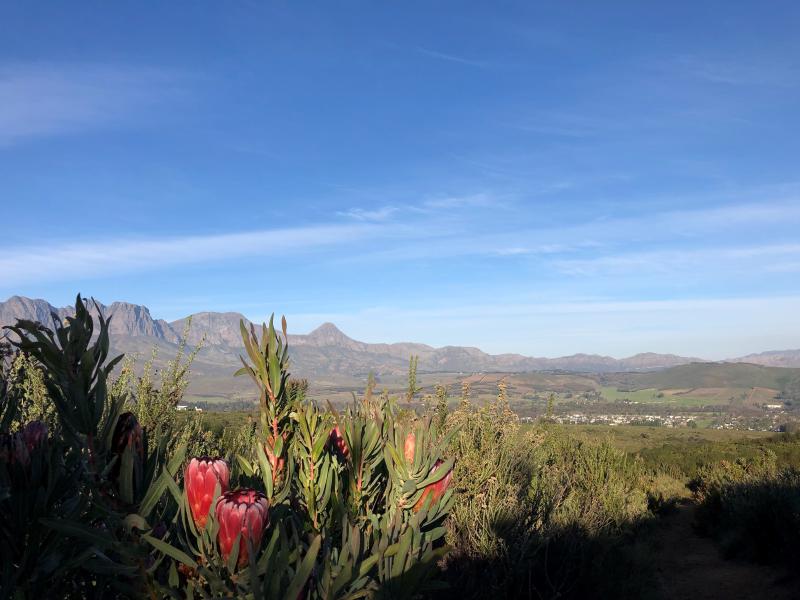
Let’s go for a slightly less anxious start than the previous edition did:
Well hello there folks!
A week ago, I made a deliberate decision not to post a WHV, as I really did not have much to report on.
However, it’s funny how these things go. One week nothing… Then it’s just a single week later and there’s almost a bit too much that I would like to talk about.
It seems to have been a mix of more writing, but also just more doing.
So, looking back at the two weeks from Monday July 1 to Sunday July 14, 2019, I would like to present the following notes.
Bullet List of Miscellany (BLoM).
- GOU#1, age 13, is on a week-long school trip in a different time zone (GMT+8). I am super happy that she can have this experience, but durnit, one misses one’s genetic offspring units dearly!
- Remember that I told you about our solar inverter not talking to the battery’s BMS? Well, one small recommended firmware upgrade later, from 151507 to 151508, and the whole system is completely down. Please cross your fingers, because we’ve tried everything else.
- I regularly get accosted by off-leash dogs whilst running. There are incredibly clear by-laws down here which absolutely forbid any dog ever being off-leash in any public space which is not a designated off-leash zone. I recently made the mistake (twice) of trying to explain this to the relevant dog-owners. Well, dog-owners seem to be quite sadly under-endowed in the area of introspective capability, but at least I’m getting a lot better at unprepared debates in public spaces. (Psychologists in the audience, help me out here with any tips please!)
- I really enjoyed this Sam Harris podcast with Eric Topol. Eric Topol is a cardiologist and the founder and director of the Scripps Research Translational Institute in the US. Apart from the main topic of the discussion, namely Topol’s well-developed and articulated view of AI in medicine (well, his books on this topic are quite influential, so there’s that), I was struck and inspired by the humble gentleness of this impressive intellect. Furthermore, although we are not supposed to use twitter anymore (in some circles, it has been dubbed “road rage of the internet”), Prof Topol’s tweet stream is a shining example of how twitter could be used more constructively.
Would you like some more Emacs with that Email?
During the past two weeks I published two blog posts on my nerd blog:
- Sending queued mails in the background with mu4e.
- Is mbsync really faster than offlineimap? A measurement.
Based on these, you might come to the conclusion that I’m processing email inside of Emacs again.
I can confirm that this is indeed the case.
Probably for a large part due to the popularity of google’s gmail, the growth of the rest of the email ecosystem seems to have been stunted to a significant degree.
In this specific case, I am referring to the dearth of really good email clients for Windows.
(By the way, Thunderbird, still my fallback, usually makes the top of any Windows email client lists. However, if it weren’t for GMail, Thunderbird would probably also be miles better than it is today.)
After losing more hours than I could afford trying to find that perfect email client (I would have settled for “still has all of its own teeth”), I realised that I would just have to buckle down and get mu4e, my favourite Emacs email client, working well enough on Windows, which I currently prefer (DID I JUST SAY THAT?!) due to my ThinkPad X1E baby.
That was of course a whole different wormhole to get sucked into.
Well, more of those precious hours later, I have a Frankensteined concoction consisting of Emacs running on the Windows Subsystem for Linux (WSL), displaying to the Windows desktop via X410, and opening email and orgmode attachments, and dired files, using the native Windows handlers via an xdg-open work-alike I coded up in Python.
(I am planning to release my xdg-open clone along with a more detailed howto blog post. Let me know if you would like advanced access.)
Soooo…. after all of that effort I am now back more or less to where I started in 2014.
(To be honest, Emacs is near the top of my list of compounding activities. The fact that it’s back in my email workflow, combined with five years of compounded Emacs skills, has resulted in further increased efficiency.)
Sticking it to the Man (GMail) with FastMail.
Wrapping up that email workflow reconfiguration frenzy, I did spend some minutes doing a quick survey of fastmail alternatives which might have email servers somewhat closer to the Southern tip of Africa and hence shave off a few seconds of latency.
I found nothing that came close in terms of features and price. Except for one outage, I’ve been a really happy fastmail camper for the last three years.
All of that, together with the fact that gmail’s continued dominance is unhealthy for the world of email, convinced me to stick with fastmail for the conceivable future.
Stone Three Healthcare is now a thing.
Stone Three Healthcare, until recently a business unit within Stone Three Venture Technology, has now been officially spun out.
In other words, S3HC is now a more-or-less independent company that will henceforth have to create its own success.
As some of you know, this project has been cooking for a few years now.
We have a really great team, products with customers and a market, and a respectable patch of runway.
There are worse ways for a startup to start up.
P.S. if you have any golden tips for startup dummies, I (and probably others) would be super grateful if you could let ’em loose in the comments!
Always Be Compounding: The side-project edition.
In the previous WHV, I started going on about the principle of ABC, or Always Be Compounding.
Since then, I’ve been spending a great deal of mental cycles on finding more ways to ABC.
Besides the more general examples I mentioned there, another method is to design some long-running project that can function as a container for all of the work that you’ll have to do in any case.
A perhaps slightly flawed personal example is DeVIDE, an open source visualization and image processing tool that started life somewhere in 2001, was renamed to DeVIDE at the end of 2003, open-sourced in 2007 and had its last release in 2012.
Although it did see some use after that, the project went into hibernation (weeeelll….) when I left academia.
My point is that, for about 10 years, I had a single technical artifact with a name that became slowly better known (even if it was often by its alias “Not Responding”), into which I could integrate all the other new work I was doing.
This enabled me to enjoy some of the advantages of compounding effort, in the shape of DeVIDE, even although the work I was doing over the years necessarily had to change.
(A really nice additional benefit was that some students sometimes found the software useful! I do wish that that part could have continued for a little longer.)
Setting aside my DeVIDE-nostalgia (and a bit of sadness) for a moment, I would like to apply some of this learning to my current (and perhaps your) situation.
My idea would be to define a new side-project that can act as the slightly longer-lived container for some of the smaller side-projects and learnings I sometimes manage to spend time on.
It would have to be a technology / thematic fit for many of my other side-projects. It would of course constitute a double-whammy if this side-project had commercial potential.
Well, SURPRISE!
I do have at least one side-project that ticks a number of these boxes, and could potentially serve as such a vehicle.
AIKNO
The side-project in question is called AIKNO, which is pronounced “I know”, but which somehow expands to AI organizational knowledge base. Magic!
It eats all of your organization’s emails for breakfast, and then uses different methods, both algorithmic and crowd/team-sourced, to sort and organize those emails and all of their attachments, and then makes those easily and attractively (hey, data visualization!) accessible by that organization.
Think of it as an almost zero-effort always-up-to-date organizational knowledge base.
Besides having slots for various machine learning and visualization techniques, it fits nicely into my overgrown knowledge management hobby.
The first commit in the AIKNO repo was in November of 2017. Oof. The prototype is able to import emails and attachments into its structured database, and already does funky stuff with similarity searches and whatnot.
Unfortunately, it has also suffered from my regular technology stack changes, and it’s currently languishing while I write blog posts.
My previous failed side-project was called TableTops, or Paradigm Desktop by the same people who dubbed DeVIDE “Not Responding”.
It was a free-form canvas / whiteboard tool for the free-form storage and linking of anything. For example, it had relational data structures for linking specific coordinates or regions in photos to centralised concepts, and other interesting things that will probably never see the light of day.
It went through seven tech-stack-change-induced rewrites before being obsoleted by my growing Emacs Orgmode powers. (first commit October 2013, last commit August 2017, now on the backest back burner. the one that’s not burning.)
I did learn a tremendous amount.
Maybe that is the real reason for doing these things?
Always Be Learning.
Thanks for joining me on that trip folks.
I hope to see you soon. Until then, make an amazing time!
